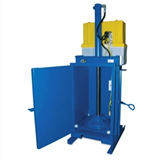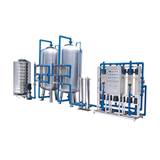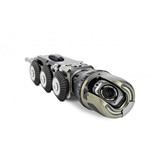Learn practical steps for Australian industries to reduce costly equipment failures using IoT, AI, and smart sensors with predictive maintenance strategies.
Key takeaways
- Understand the cost by recognising that unplanned downtime can drain up to $349,000 per hour from Australian industrial operations, while predictive maintenance can reduce these losses by 20–50%
- Leverage IoT and AI to forecast equipment failures before they occur by integrating smart sensors, edge computing, and machine learning into your maintenance strategy.
- Build the business case with confidence, knowing that Australia’s predictive maintenance market is growing at a 22.9% CAGR through to 2033, offering significant long-term savings and competitive advantage.
- Address data and skills by ensuring you have clean, structured asset data, strong IT/OT system integration, and a well-trained maintenance team capable of acting on predictive insights.
- Follow a structured roadmap by assessing your readiness, piloting predictive tools on critical assets, scaling based on results, and embedding predictive metrics into your operational KPIs.
- Best-suited equipment – Pumps, motors, compressors, conveyors and CNC machines are prime candidates for predictive maintenance, offering fast wins in uptime, safety and cost savings across Australian operations.
Introduction
Every hour your critical equipment is down, your bottom line takes a hit. In Australia, the typical industrial business loses $349,000 for each hour of unscheduled downtime, a figure nearly 80% higher than the global average. With rising labour costs, tight margins and supply-chain pressures, reducing downtime is no longer optional, it’s essential. Predictive maintenance, powered by IoT sensors and AI analytics, moves you from reactive firefighting to proactive asset care, slashing unplanned outages by up to 50% and extending equipment life. In this guide, you’ll explore how to understand your downtime challenges, choose the right technology, build a compelling business case, and implement a successful predictive-maintenance programme in the Australian context.
Understanding the downtime challenge
The true cost of unplanned outages
- Direct costs: labour for emergency repairs, expedited freight for parts, and lost production.
- Indirect costs: safety risks, quality failures, overtime premiums and customer penalties.
- Australian benchmark: $349,000 /hr lost for unplanned downtime, versus $194,000 /hr globally.
Key drivers of downtime
- Equipment age and wear: older assets fail more often, 65% of downtime arises from mechanical degradation.
- Environmental factors: heat, dust and humidity in mines or food plants accelerate component failure.
- Process variability: unplanned line changeovers and manual interventions trigger errors.
What is predictive maintenance?
Predictive maintenance (PdM) uses real-time data from sensors, vibration, temperature, oil-analysis, and AI-driven analytics to predict when a component is about to fail. You schedule maintenance only when needed, rather than on a fixed calendar or after a breakdown.
- Contrast with preventive – preventive maintenance replaces parts on a schedule (e.g. monthly), often discarding still-usable components.
- Contrast with reactive – reactive “run to failure” waits for breakdowns; 24% of Australian firms still rely on it.
Benefit snapshot: Implementing PdM can reduce unplanned downtime by 20–50%, lower maintenance costs by 10–30%, and extend asset life by 20%.
Key technologies for predictive maintenance
- IoT sensors and edge devices
- Vibration monitors, thermographic cameras and ultrasonic detectors.
- Edge computing pre-processes data onsite, reducing cloud costs and latency.
- Data connectivity and integration
- Robust OT/IT networks to stream high-frequency sensor data securely.
- Industry-standard protocols (OPC UA, MQTT) ensure compatibility.
- Machine learning analytics
- Algorithms that detect anomaly patterns, model degradation curves and forecast remaining useful life (RUL).
- Cloud or on-prem AI engines tune models to your equipment’s behaviour.
- Digital twins
- Virtual replicas of assets for real-time simulation and what-if analysis.
- Enables scenario testing (e.g. “What if this bearing runs 10 °C hotter?”).
Building the business case
Market momentum and ROI
- Australia’s predictive-maintenance market reached USD 254 million in 2024 and is forecast to grow at 22.9% CAGR to 2033.
- Early adopters report ROI payback in 6–18 months, depending on asset criticality.
Calculating savings
- Downtime avoided: Multiply predicted downtime reduction hours by your per-hour loss rate (e.g. $349,000 /hr).
- Maintenance cost savings: Compare condition-based service to time-based service interventions.
- Extended asset life: Value of deferring a major overhaul by 1–2 years.
Example calculation: A mining operation with $100k/hr downtime loss achieves a 30% reduction in unplanned downtime (30 hrs saved annually). Savings = 30 hrs × $100k = $3 million per year.
Navigating compliance and standards
Predictive maintenance (PdM) systems must be designed and deployed in alignment with Australia’s safety, quality, data, and environmental regulations. These obligations aren’t just legal, they directly impact implementation success, audit readiness, and operational continuity.
Safety standards
PdM hardware and installation must not compromise machinery safety or increase operator risk.
- AS 4024 (Safety of Machinery): Any sensor or device must comply with Australian machine safety requirements.
- Safe Work Australia guidelines: Relevant for high-risk environments like confined spaces, flammable dust zones, or hazardous energy sources.
Quality frameworks
Predictive maintenance supports quality assurance and asset management goals.
- ISO 55001: Aligns with condition-based maintenance, asset life-cycle planning, and performance monitoring.
- ISO 9001: PdM alerts and interventions should be integrated into quality systems, particularly where equipment affects regulated outputs (e.g. food or pharmaceuticals).
Example: In TGA-regulated facilities, PdM-triggered maintenance must be documented as part of GMP compliance.
Data and cybersecurity
PdM platforms can interact with personally identifiable information or expose OT networks to cyber risks.
- Privacy Act 1988: Applies if technician data or wearable devices are used. Data collection, storage and access must comply with the Australian Privacy Principles (APPs).
- Cybersecurity standards: PdM systems should align with the ACSC’s Essential Eight framework to mitigate risks in critical infrastructure.
Environmental compliance
PdM hardware introduces e-waste and energy considerations.
- E-waste regulations: Vary by state, ensure sensors and devices are disposed of or recycled via certified programs.
- Energy reporting: High-volume sites may need to account for sensor and device energy use under NGER requirements.
Getting started: A six-step implementation roadmap
- Assess your asset criticality: Identify top 10 critical machines whose failure causes greatest financial impact.
- Pilot on a single asset class: Start with pumps or motors, simple to instrument and high ROI potential.
- Deploy sensors and connectivity: Ensure robust network design: segregate OT traffic and secure endpoints.
- Develop analytics models: Collaborate with vendor or in-house data scientists; validate predictions against historical failures.
- Integrate workflows: Link PdM alerts to your CMMS/EAM system to automate work orders and spare-parts provisioning.
- Scale and embed: Roll out across sites, refine models, and embed predictive KPIs (e.g. % downtime avoided) in executive dashboards.
Overcoming data and skills challenges
- Data cleanliness: legacy equipment may lack digital outputs. Use retrofit kits or manual data validation protocols.
- Talent gap: invest in upskilling your maintenance engineers on basic data analytics and condition-monitoring techniques. Partner with TAFE or industry bodies for accredited courses.
- Change management: align stakeholders around the value of PdM, run workshops demonstrating live anomaly detections to build confidence.
Equipment types that benefit most from predictive maintenance
Not every asset justifies predictive maintenance — but for high-value, failure-prone, or production-critical equipment, the impact can be substantial. The following equipment types are ideal starting points for PdM deployment across Australian industries:
Rotating equipment
These are among the most failure-prone assets and some of the easiest to monitor with vibration and thermal sensors.
- Pumps – Common in water treatment, mining, food processing and HVAC systems. A Perth-based food manufacturer reduced pump failures by 45% using PdM alerts to schedule seal and bearing replacements.
- Motors – Drive compressors, conveyors, and mixers across manufacturing and logistics.Combine vibration and temperature sensors to detect winding or shaft issues before critical failure.
- Fans and blowers – Used in ventilation, drying, or dust extraction systems. A grain facility in WA used PdM to spot fan belt wear early, avoiding seasonal downtime.
Compressors and refrigeration units
These systems are capital-intensive and critical in cold-chain logistics, food production, and manufacturing.
- Air compressors – Essential for pneumatic tools and automation.PdM flags pressure anomalies and abnormal vibration before total failure.
- Refrigeration compressors – Used in food storage, pharmaceuticals, and cold logistics. A regional cold storage facility used PdM to optimise compressor cycling, cutting CO2 emissions by 18% and reducing repair costs.
Conveyors and material handling systems
Breakdowns here can halt entire lines or cause costly production bottlenecks.
- Belt conveyors – Used in mining, packaging, and warehousing. PdM sensors can detect belt misalignment, roller wear, or motor overheating.
- Automated guided vehicles (AGVs) – Increasingly used in warehouses and distribution centres. PdM-enabled diagnostics improve AGV uptime by tracking battery health and wheel alignment.
CNC machinery and precision tools
Failure of these assets impacts both productivity and quality.
- CNC mills, lathes, and routers – Used in metalworking, plastics, and electronics assembly. PdM identifies spindle imbalance or coolant flow issues before surface defects emerge.
- Injection moulding machines – Critical in plastics and packaging. Temperature and pressure sensors help flag nozzle blockages or hydraulic faults.
HVAC and building systems
Facilities management teams increasingly rely on PdM for operational continuity and energy efficiency.
- Boilers, chillers, air handling units – Used in hospitals, large offices, and retail centres. A Sydney hospital integrated PdM into their chiller system, reducing maintenance callouts by 30% over 12 months.
- Building lifts and escalators – Common in commercial buildings and transport hubs. Predictive alerts on vibration and motor temperature help avoid service outages and complaints.
How to prioritise which assets to monitor first
Start where downtime hurts most — PdM should begin with critical assets that:
- Have a high cost of failure (e.g. $5,000+/hr production loss)
- Are central to production flow or customer service
- Exhibit recurring faults or require frequent manual checks
- Have available sensor technology with proven use cases (e.g. vibration, temperature)
Emerging trends and future outlook
Predictive maintenance (PdM) is advancing quickly, driven by new technologies and shifting business priorities across Australia.
Generative AI for diagnostics
- AI-powered tools now transform complex sensor data and failure logs into easy-to-understand insights. This accelerates root-cause analysis and decision-making. For instance, a logistics company in Western Sydney integrated AI with PdM to reduce downtime by 22% within six months.
5G and private industrial networks
- The rollout of 5G and private LTE networks is enabling real-time, high-frequency data transmission, even in remote or challenging environments. Mining operations in the Pilbara are already leveraging 5G to monitor heavy equipment remotely, improving safety and reducing on-site visits.
Autonomous maintenance
- Robotics, including drones and inspection robots, are increasingly used for monitoring equipment in hazardous or hard-to-access locations. Australian research teams, such as CSIRO’s Data61, are collaborating with manufacturers to deploy these technologies in food and pharmaceutical plants, enhancing worker safety and operational efficiency.
Sustainability and energy monitoring
- PdM is now integrating sustainability metrics, helping businesses track energy use and reduce emissions. For example, a regional cold storage facility used PdM to optimise compressor cycles, cutting CO2 emissions by 18% while extending equipment lifespan. This aligns with growing pressure from investors and regulators for better ESG reporting.
Conclusion
Predictive maintenance transforms your maintenance strategy from firefighting to foresight, cutting unplanned downtime, optimising costs and extending asset life. In Australia’s high-cost operating environment, with downtime losses averaging $349,000 per hour, the case for PdM has never been stronger. By following a structured roadmap, assessing critical assets, piloting smart sensors, building analytics models and embedding outcomes in your KPIs, you can secure rapid ROI, enhance safety and drive sustainable performance. Start small, think big, and let data guide you to a reliably resilient operation.



-160x160-state_article-rel-cat.png)
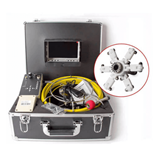
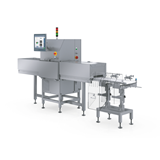
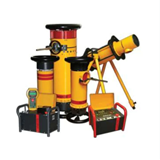
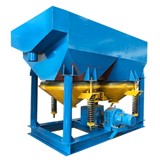
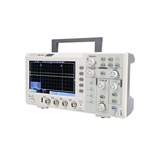
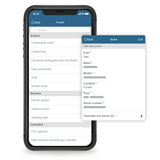


-160x160-state_article-rel-cat.png)







